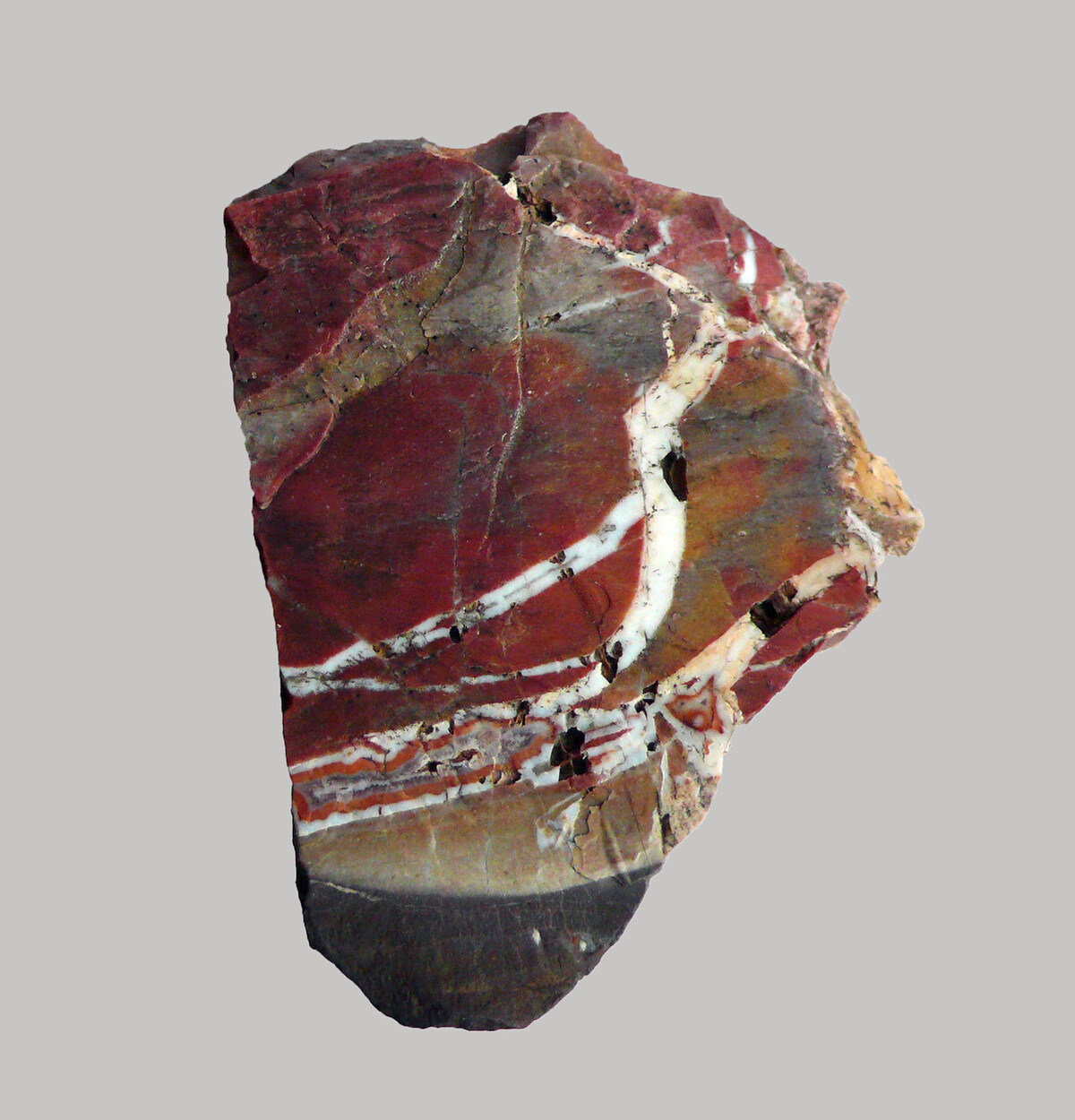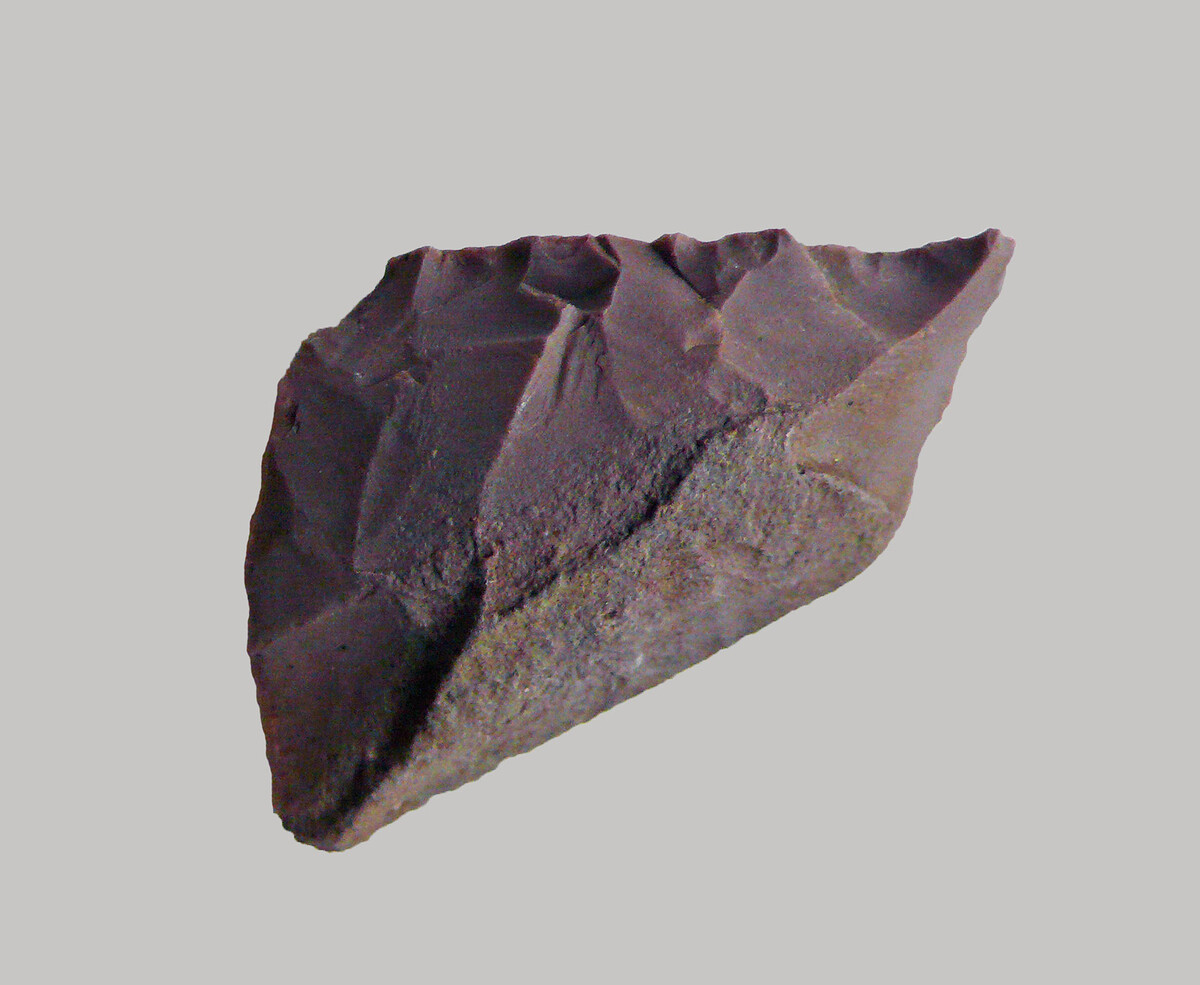Radiolarite mining in Vienna before the Neolithic? Raw material and technological analyses of an unusual lithic assemblage
Since 2017, silicite deposits and their prehistoric use are investigated in Vienna. Amongst the approximately 30 detected quarrying and workshop sites one assemblage is particularly intriguing due to technological aspects and the high amount of thermally altered lithics. This assemblage was therefore studied in a research project
The site »LTG-Ra_15« was discovered in 2018. It was already recognized in the field that the assemblage differed from other radiolarite extraction sites in the St. Veit Klippen Zone, regarding its composition (many cores and barely pre-cores), specific technological aspects resulting in particular morphological characteristics, and especially the high amount of thermally altered pieces. These indications pointed towards the possibility of an Early Mesolithic extraction site. The intentional heat treatment of silicites to enhance their knapping properties is attested from the Palaeolithic through the Neolithic, however, in Middle Europe this technology was only used to a larger extent during the Early Mesolithic (c. 10000–7000 BC) and can be regarded characteristic for this time period.
The investigated material was recovered during three surveys between 2018 and 2020. Altogether, 601 lithics were suitable for this study. Most artefacts are heavily fragmented and could therefore not be used for conclusive assessments. Additionally, there exists a high amount of uncharacteristic debris as a result of extraction and initial knapping activities on site. Only product of the latter can be used for techno-typological investigations.
Methods
All selected lithics were studied under the stereo-microscope regarding their raw material composition and thermal alteration, and according to techno-morphological criteria. All parameters were recorded in an excel-database. The combination of stereomicroscopic and technological analyses should reveal if the material is chronologically homogeneous and allow at least approximate dating of the assemblage.
Technology and morphology
One focus was laid on core technology and reduction strategies. Early Mesolithic cores display a large variety of shapes due to the flexibility in raw material use. Therefore, it is difficult to define and identify specific core types and shapes for this time period. The predominantly unidirectional core reduction, typically performed on only one side of the core, corresponds well with Early Mesolithic core technology. Unidirectional bladelet production is also attested from very small and in most cases heat treated cores. According to M. Heinen, another characteristic is direct reduction on split nodules without any further preparation, which can also be seen at this assemblage. The combination of these criteria are therefore a strong indication for an Early Mesolithic date, even though absolute dates are not yet available.
Future prospects
The first results obtained from this study are very promising and will be expanded in the course of more detailed analyses. It is also planned to compare this assemblage to other – presumably mostly Neolithic – materials from other sites within the SVK using the same methodological approach to reveal trends and create a broad database for future investigations. This will allow systematic technological comparison studies with known Early Mesolithic assemblages also from a wider area.


